February 20 & 21, 2016
We thoroughly appreciated the uncrowded, free camping by Kelso Dunes in the quiet of Mojave National Preserve. With just under 600,000 visitors last year this little known jewel should be visited before it starts to get crowded.
 Bill and I enjoyed a brief time with late light and shadows on the Mesquite sand dunes in Death Valley. We had also seen, or not seen, how blowing wind obscures the dunes, and just about everything else around. So we were really looking forward to some time with the dunes but didn’t realize we could camp there.
Bill and I enjoyed a brief time with late light and shadows on the Mesquite sand dunes in Death Valley. We had also seen, or not seen, how blowing wind obscures the dunes, and just about everything else around. So we were really looking forward to some time with the dunes but didn’t realize we could camp there.
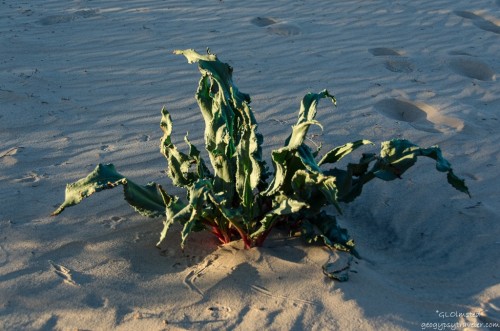 Always ask the Ranger. Which I forgot to do regarding this plant.
Always ask the Ranger. Which I forgot to do regarding this plant.
As soon as we walked into the visitor center a Ranger at a table with tortoise information asked immediately if we’d seen a tortoise. No, and didn’t for the entire visit. I wanted to see at least one, but not in the road, so can live with that. Two more Rangers behind the desk were helpful, one seemed more seasoned, the other at his first park started in winter and was eagerly learning the newest blooms. They gave us the skinny on free camping at the dunes where you’re suppose to park by a fire ring.
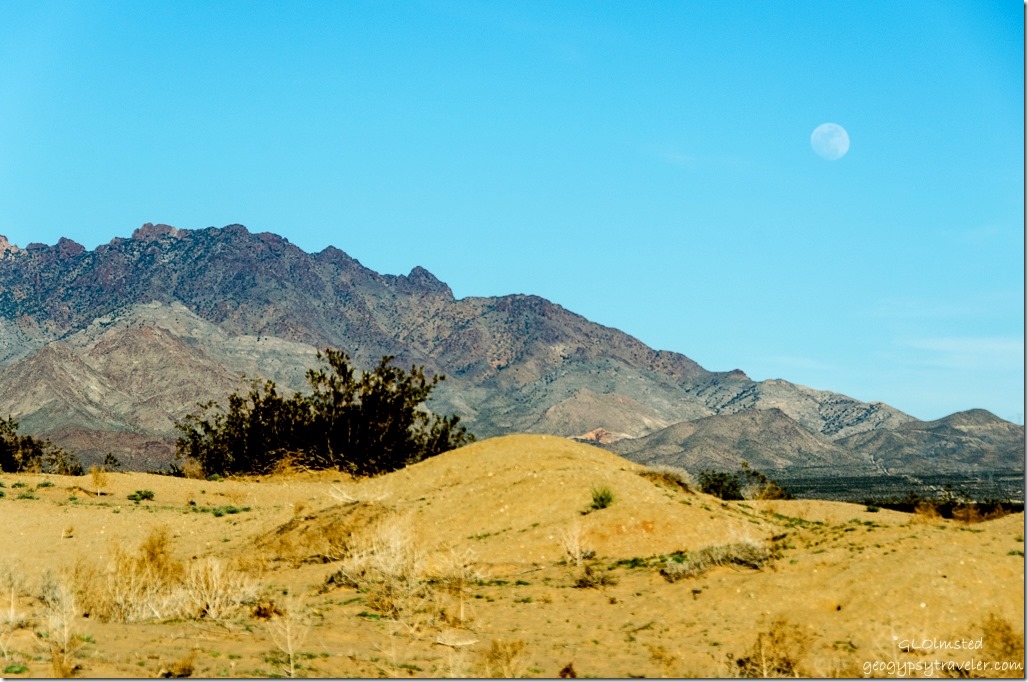 So off we went. Seven miles (11 km) south of Kelso Depot on the Kelbaker Road, then 3 miles (4.8 km) west on a graded dirt road, off to the right we saw the one big tree we’d been told to look for.
So off we went. Seven miles (11 km) south of Kelso Depot on the Kelbaker Road, then 3 miles (4.8 km) west on a graded dirt road, off to the right we saw the one big tree we’d been told to look for.
This Says Phoebe welcomed us to camp and perched on this sign in between bug catches. One of the IDs I got the next day back at the visitor center.
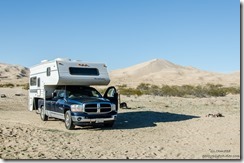 Perfect camp view of the dunes. And Mojave is dog friendly on leash.
Perfect camp view of the dunes. And Mojave is dog friendly on leash.
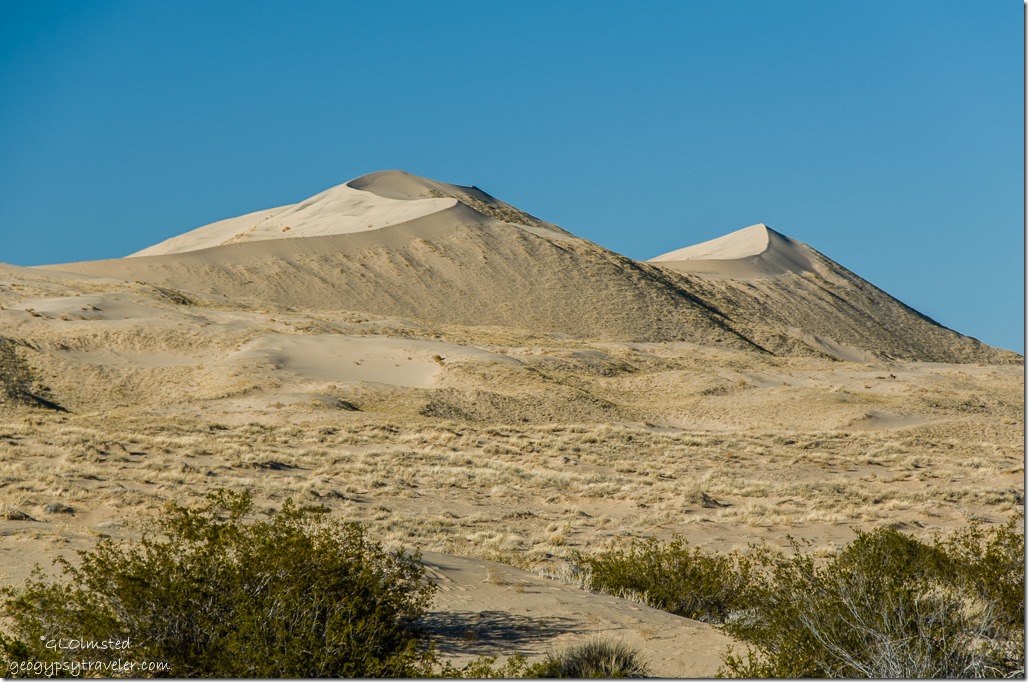 Nearly 700 feet high and covering a 45-square-mile area, the Kelso Dunes are among the tallest and most extensive dune fields in the United States.
Nearly 700 feet high and covering a 45-square-mile area, the Kelso Dunes are among the tallest and most extensive dune fields in the United States.
Huge amounts of sand were needed to build Kelso’s delicate wind-created sculptures, but geologists studying the Preserve discovered that no new sand is moving in to replenish the dunes. By studying the mineral composition and shapes of sand grains they discovered that most of the sand has traveled all the way from the Mojave River sink east of Afton Canyon at least 30 miles (48 km) away. Wind blowing from the northwest gradually carried the sand southeastward to the base of the Providence and Granite Mountains. Where the sand piles up researchers found that the dunes are actually made up of several sets of dunes, stacked one on top of another. Each set formed in response to some past climate change during the last 25,000 years.
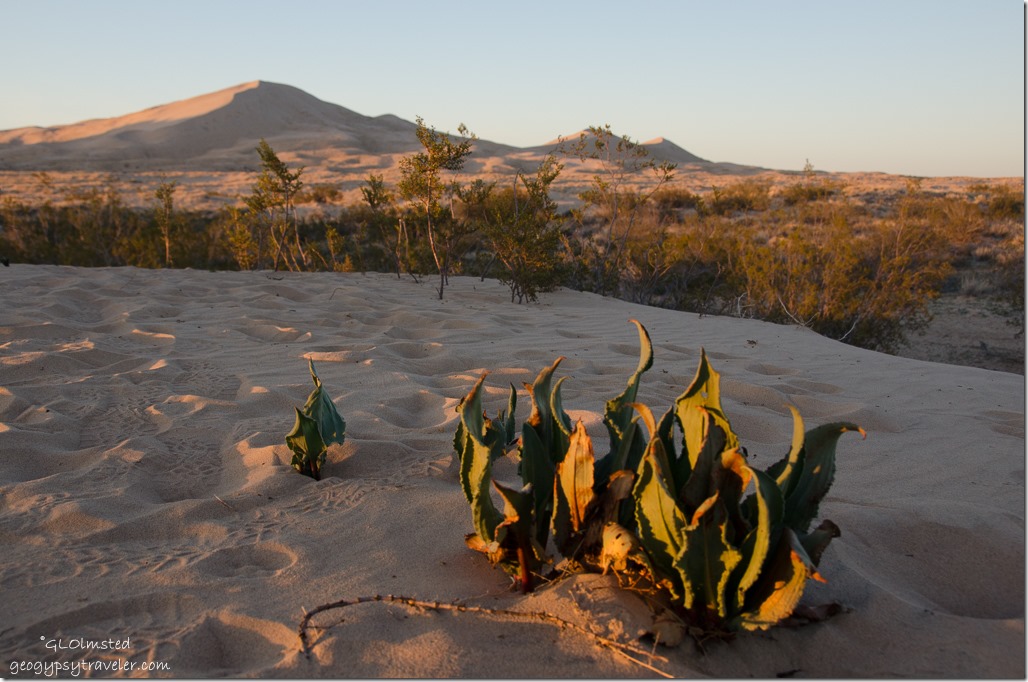 Over the past few thousand years plants have progressively covered and stabilized areas once covered by drifting sand. Yet a slightly drier climate may kill some of the vegetation holding the sand in place. Once the grasp of the plant roots is loosened, the sand is on the move again.
Over the past few thousand years plants have progressively covered and stabilized areas once covered by drifting sand. Yet a slightly drier climate may kill some of the vegetation holding the sand in place. Once the grasp of the plant roots is loosened, the sand is on the move again.
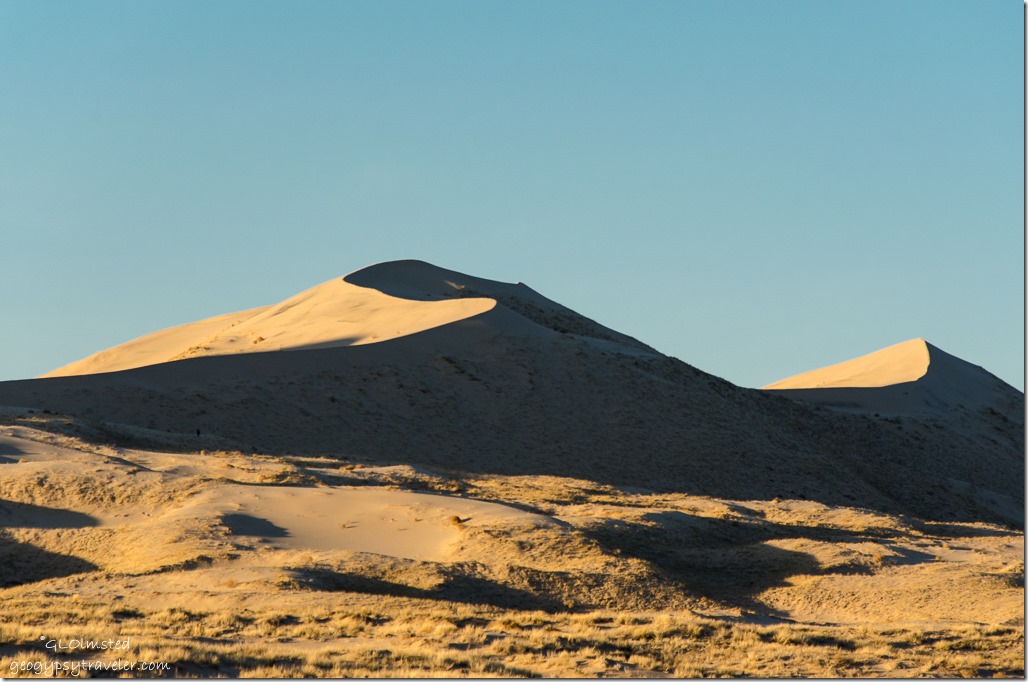 And all it takes is a bit of breeze (10 miles/hour or 16 kilometers/hour) to put fine sand in motion. The finest grains may be suspended in the air and carried along. Heavier grains tend to bounce along as they are lifted into the air, fall back to the ground, then bounce back up again. Once sand begins to pile up, ripples and dunes can form. Wind continues to move sand up to the top of the pile until the pile is so steep that it collapses under its own weight. The collapsing sand comes to rest when it reaches just the right steepness to keep the dune stable. This angle, usually about 30-34 °, is called the angle of repose.
And all it takes is a bit of breeze (10 miles/hour or 16 kilometers/hour) to put fine sand in motion. The finest grains may be suspended in the air and carried along. Heavier grains tend to bounce along as they are lifted into the air, fall back to the ground, then bounce back up again. Once sand begins to pile up, ripples and dunes can form. Wind continues to move sand up to the top of the pile until the pile is so steep that it collapses under its own weight. The collapsing sand comes to rest when it reaches just the right steepness to keep the dune stable. This angle, usually about 30-34 °, is called the angle of repose.
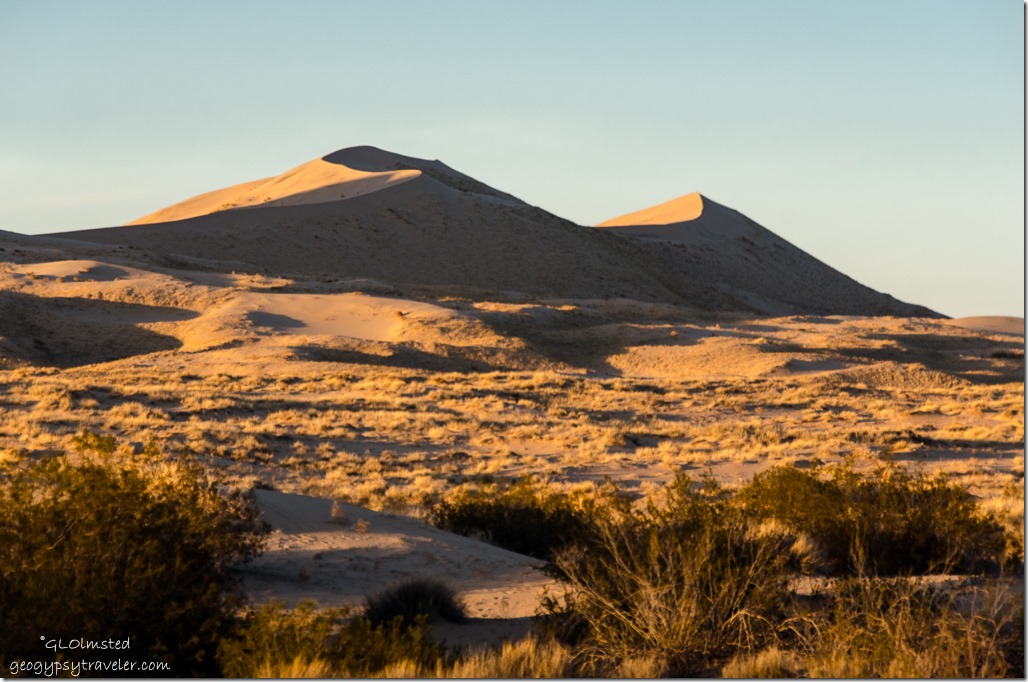 We didn’t walk out into them but simply enjoyed watching the change in shadows as the sun sank lower towards the horizon. Of course that means we didn’t hear them sing. When quantities of the sands move, they sometimes produce a “booming” or “singing” sound when sand with the right moisture content slides down the steep slopes.
We didn’t walk out into them but simply enjoyed watching the change in shadows as the sun sank lower towards the horizon. Of course that means we didn’t hear them sing. When quantities of the sands move, they sometimes produce a “booming” or “singing” sound when sand with the right moisture content slides down the steep slopes.
 OK, I did walk a little ways to see the patterns in the sand and discovered some unknown tracks from those who’d gone before me.
OK, I did walk a little ways to see the patterns in the sand and discovered some unknown tracks from those who’d gone before me.
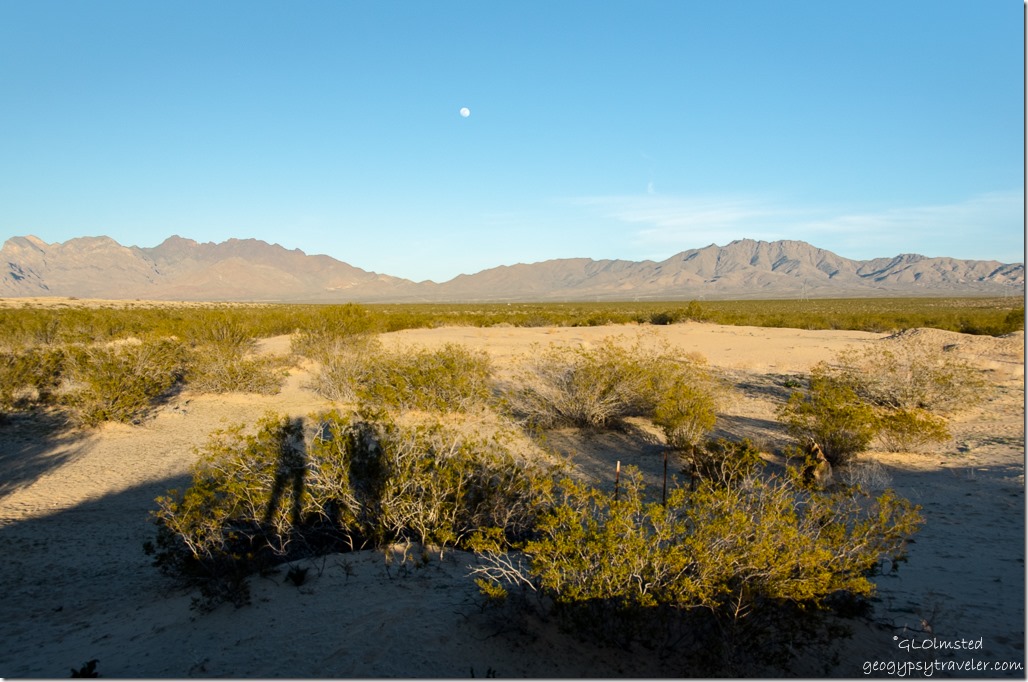 Bonus was the rising moon over the Providence Mountains. And I managed a shadow selfie of Bill, Sasha and myself. Can you see us against the bushes?
Bonus was the rising moon over the Providence Mountains. And I managed a shadow selfie of Bill, Sasha and myself. Can you see us against the bushes?
Plus the color of the sand changed as the sun set. Unfortunately my camera wasn’t auto focusing and my manual focus skills are lacking so many shots are very fuzzy.
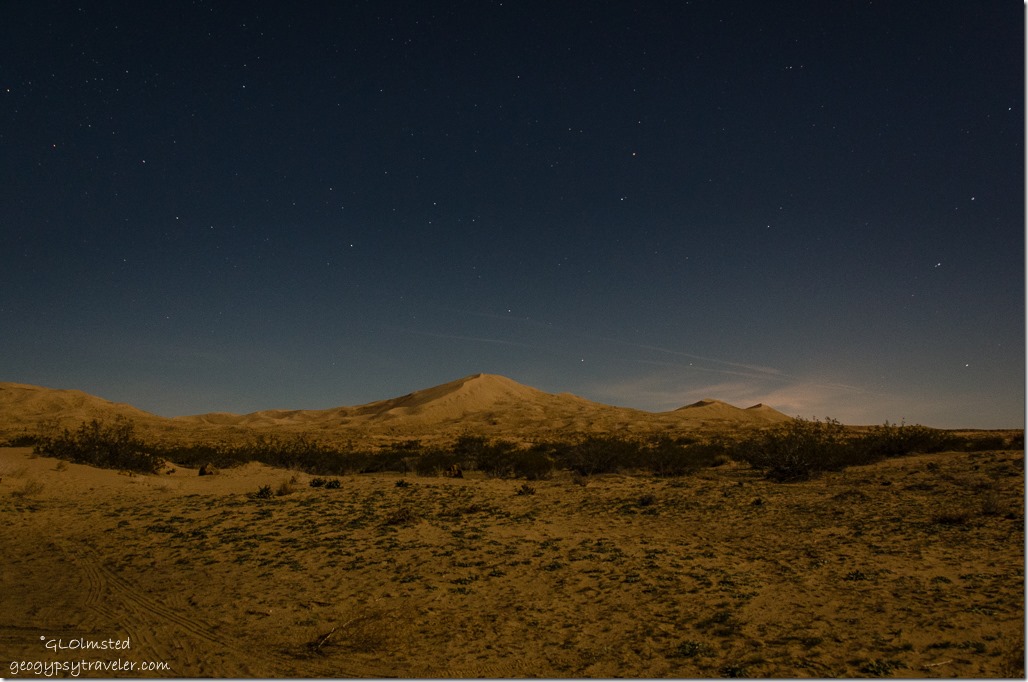 But I was really happy with the night sky shots, maybe because I got the tripod out, with the moon highlighting the dunes. Will have to try more of that when the temps stay up after dark.
But I was really happy with the night sky shots, maybe because I got the tripod out, with the moon highlighting the dunes. Will have to try more of that when the temps stay up after dark.
There are several camping options in Mojave including the dunes, roadside boondocking and two developed campgrounds. We decided to check out one of the later at Hole-in-the-Wall for our next night in the preserve.
Note: March 28 – April 28, 2016 Kelbaker Road closure from Baker to Kelso for planned road work. Can enter 39 miles east on I 15 on the Cima Road instead. 2/22/16 – 3/3/16 the water system at Kelso will be shut down to replace waste system infrastructure. Portable toilets are available; bottled water is available for purchase when the visitor center is open. Check Mojave National Preserve website for current information.

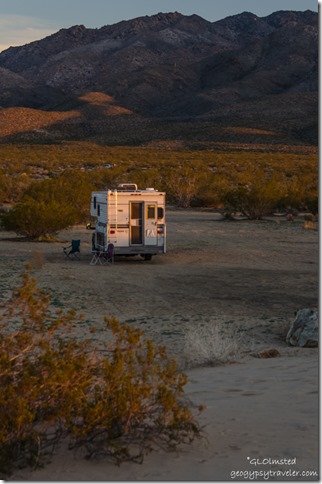
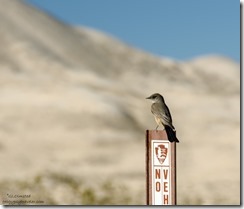
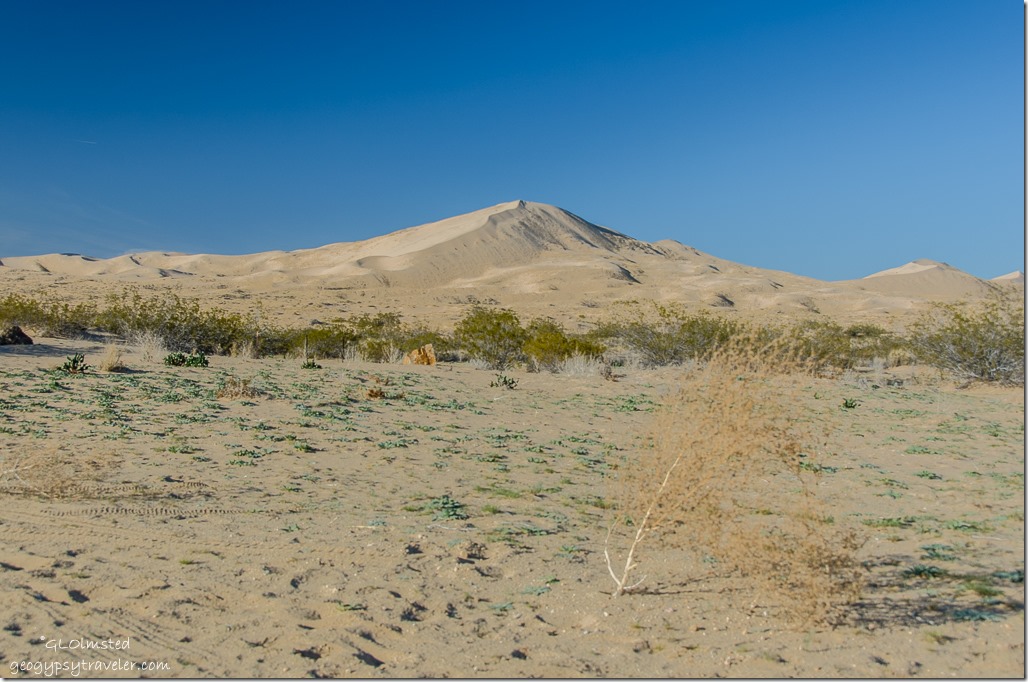
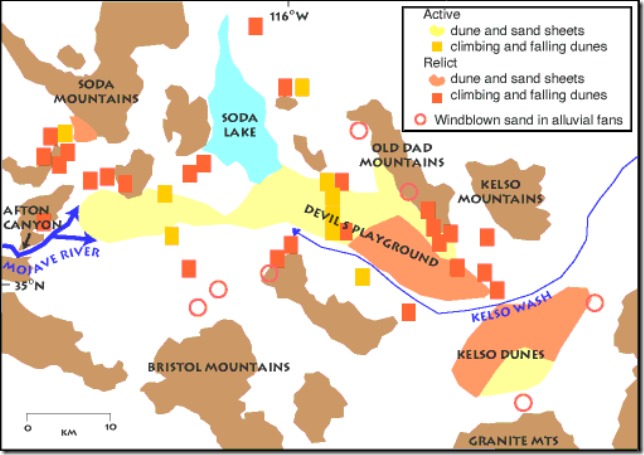
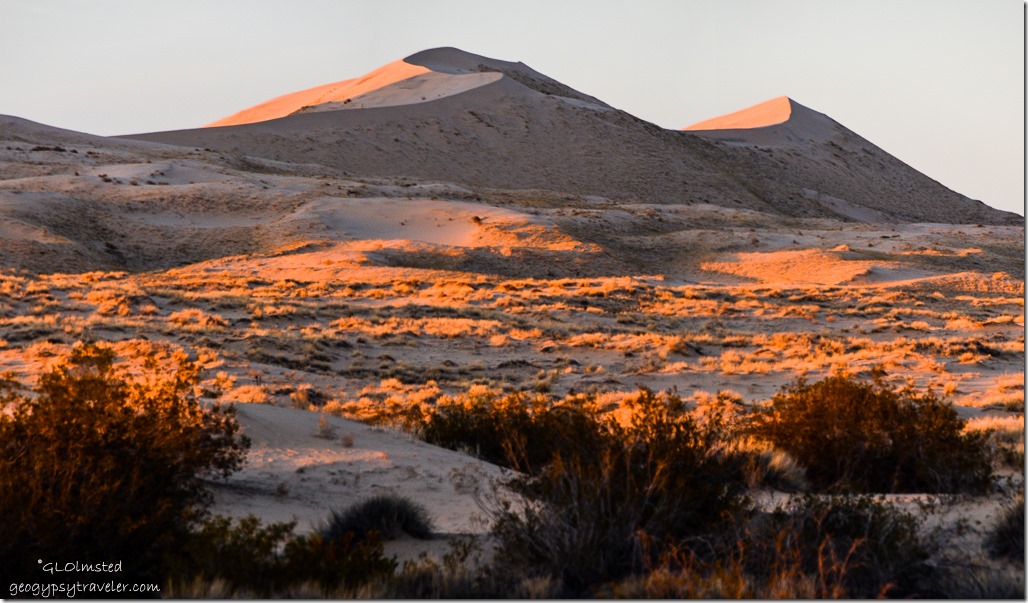
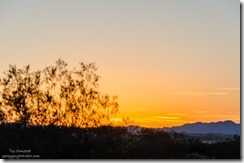
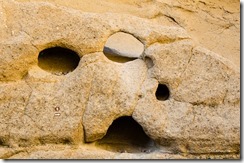
We love He in the rock too
That’s Hole in the rock campground, it’s late-early what-ever. Enjoy!!!!!
We liked Hole in the Wall too. But I don’t like this time change thing. Be well.
It’s great to find the peace and quiet under a sky full of stars. Hope the moon was not to bright to ruin your view.
The moon cast delightful shadows that night.
More wonderful scenery and interesting history of the dunes. Thanks for sharing.
They were spectacular!
“Angle of Repose” by Wallace Stegner won the Pulitzer Prize for Fiction in 1972. When I was on my quest to read all the Pulitzer Prize for Fiction books was the first time I encountered that term. “It seems to describe the loose wandering of the Ward family as they try to carve out a civilized existence in the West and, Susan hopes, to return to the East as successes. The story details Oliver’s struggles on various mining, hydrology and construction engineering jobs, and Susan’s adaptation to a hard life.”
My favorite part of the sand dunes is seeing all the animal tracks. Thanks for the info on camping in Mojave. We’re slowly working our way there.
There are lots of tracks by all kinds of animals. You’re going to like it here.
Oh, I love those dune shots and moon shots! I may have to pay a visit on my way north…
I highly recommend it, if it’s not too hot.
Thanks for the sand dune formation information:) I always enjoy gaining knew knowledge. Sweet boondocking spot! Loved the moonlit hills:)
You’re welcome. I learn so much visiting the parks, especially becoming a Junior Ranger. 😉
What a wonderful camping spot. Love the story of the dunes and your pictures of them and the wonderful ones of the tracks in the sand. Really great shots all. The one of the 3 shadows made me smile. I didn’t realize where the phrase angle of repose came from. Wallace Stegner wrote a book which is absolutely wonderful with that title. How amazing it would be to hear the dunes singing. What a super post this is.
Thanks Sherry. It’s not easy to get a selfie with Bill and Sasha. A great book by Stegner. Guess we should have climbed the dunes to see if they’d sing for us. Yet 700 feet up sand was kind of a deterrent.
Another set of great photos. Love the selfie of the three of you 😉 Diane
Thanks Diane. Bill isn’t very cooperative about selfies.
Just caught up again with all of your posts, you’re on the move! It always amazes me when plants seemingly grow right up through the sand surviving beyond reason – when seemingly nothing else survives, but the desert is surprising like that!
Baker, CA. Oh my gosh how many times we’ve driven through there and I agree, it always seems to be on the dying end of the day. Is there still a BIG Greek Restaurant in town. We’ve eaten there many times and the food was usually good. Remembering the fried zucchini and they make (made) really good milkshakes!
The post before that, the photos of your desert landscapes are gorgeous, the light was incredible.
And the Harvey Houses, there’s a story!
I’m trying to catch up on last month’s travels. I think the struggle for survival is why I love the desert so much. The Big Greek restaurant is still there. Wish we’d eaten there as I do love Greek food.
That is some amazing scenery. In a way it looks almost like a different planet … lol
The diversity in Mojave is other worldly. Wait until you see the next post at Hole in the Wall.